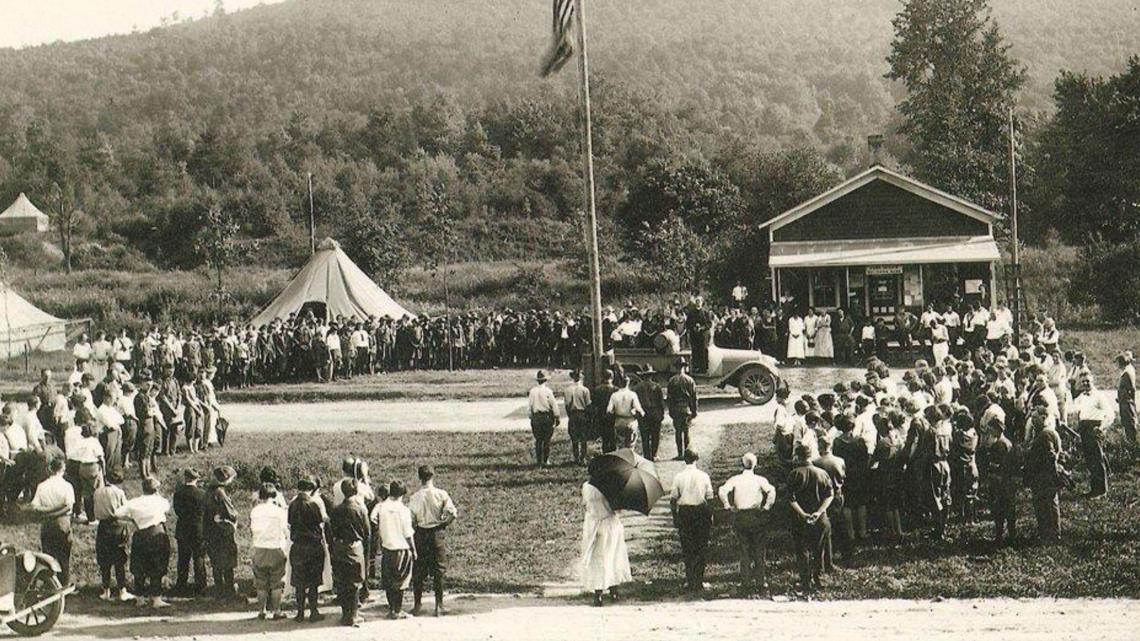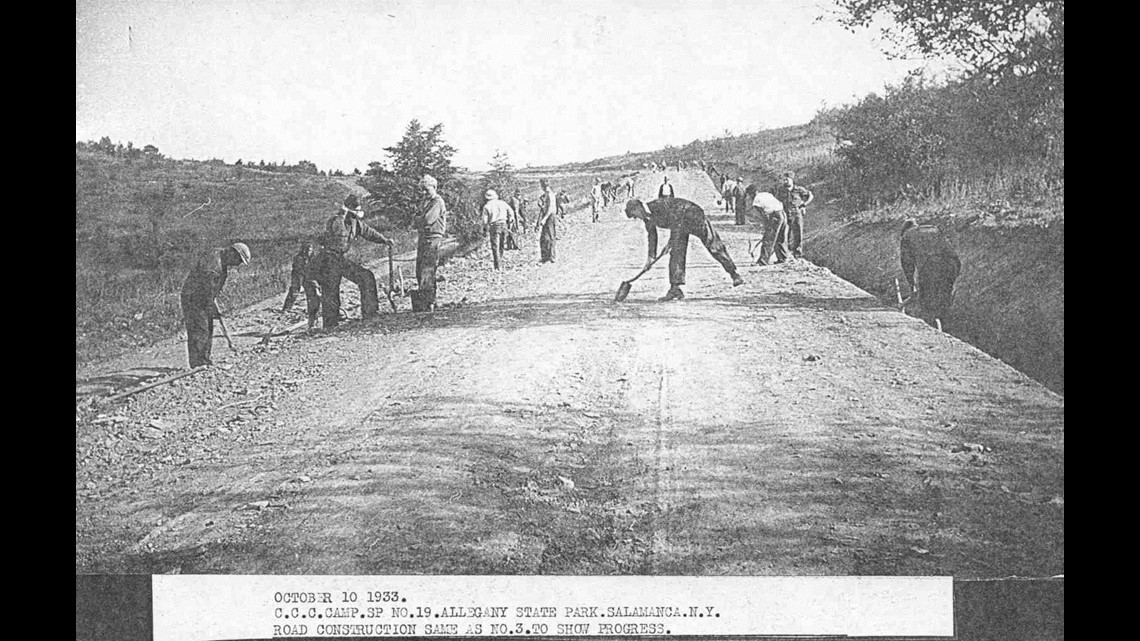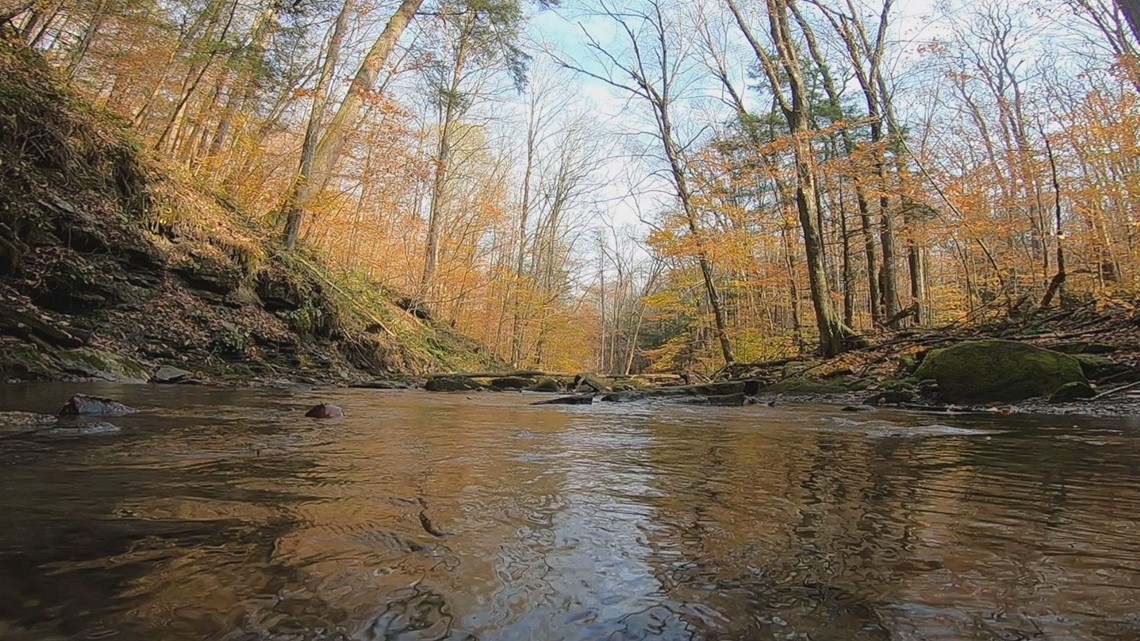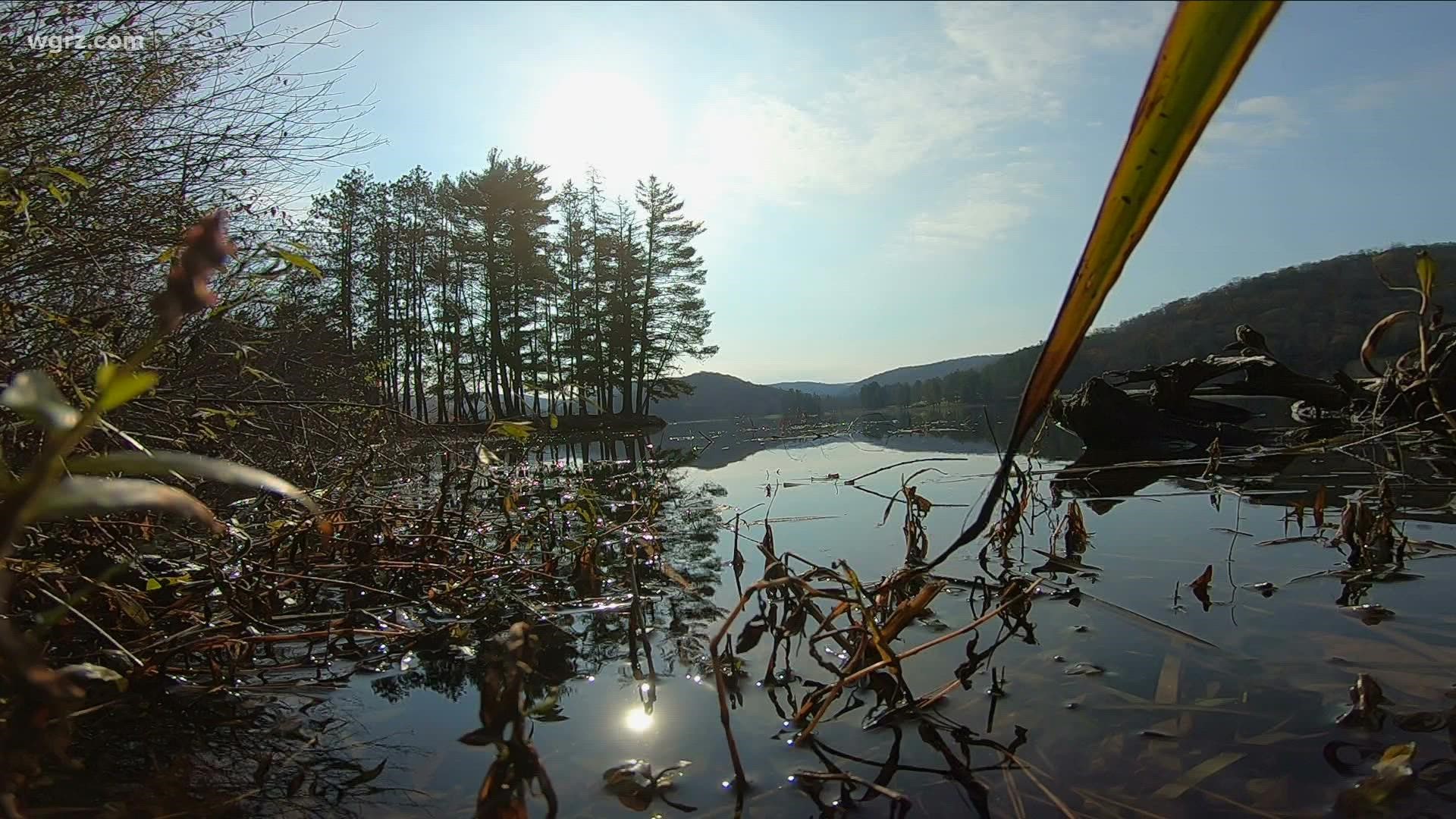SALAMANCA, N.Y. — Though you would never know it now, Allegany State Park was once a barren wasteland.
The pristine land was originally inhabited by the Seneca Nation. After the European arrival, and the establishment of the United States, it was stripped clean by the timber industry.
"There were sawmills and lumber companies, and then the trains came in, the railroads took all the trees out, and so the logging industry was here from the 1820's to almost 1890, so that had a big effect on this area, most of our forests were gone," said Adele Wellman, the park's environmental educator.
Known as the "Wilderness playground of Western New York," Allegany State Park began in 1921, when New York State provided $25,000 for the purchase of the original land.


Buffalo lawyer Hamilton Ward provided the impetus for the park after he and a friend were inspired by the area during a hunting trip there. The first 7,000 acres were purchased in June of 1921, and the park officially opened shortly after on July 30.
"That first year they had a parade to celebrate the opening the park," Wellman said. "They had a picnic, and that first year, there was five months that the park was open, they had 20,000 visitors. Today we see 1.5 million that come here every year."


The early park continued to be developed by the Civilian Conservation Corp. (CCC). They reforested the land and built roads which connected and opened up areas that were previously inaccessible.
The CCC also built many of the physical facilities, the picnic shelters, fishing piers and other amenities. Now, as the park celebrates its 100th birthday, Allegany has grown into New York's largest state park, and at almost 65,000 acres, it's the third largest in the nation.
Wellman says it's a place of great beauty that has inspired generations to return again and again.
"It's a great place for families, and a lot of parents want to bring their kids here to experience the same thing that they had when they were kids," Wellman said.


And everyone is looking forward to Allegany's next century.
"Things have changed but it's still basically this wonderful area," Wellman says. "I'm looking forward to being part of that next hundred years too."
Here are a couple links to find out more about the park. To find out about the Red House area, click here. For info on the Quaker area, click here.
RELATED ARTICLE:

